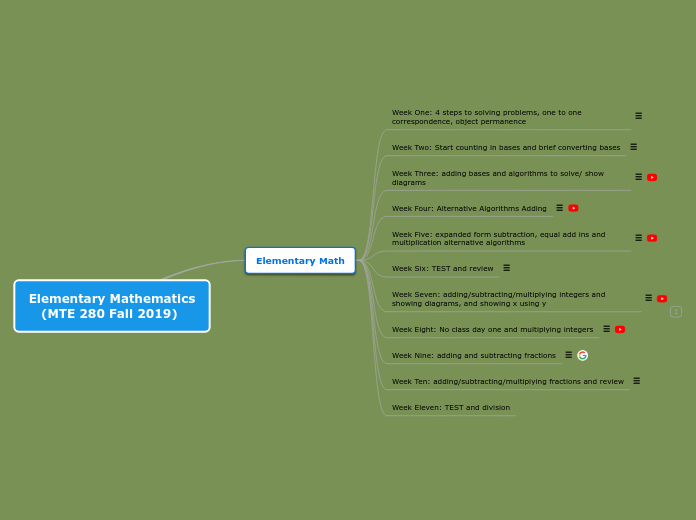Math 252.2 Unit 2
Week 2
Negative Integers
Ways to solve a division problem :
Ratio Table
The ratio table shows different multiplications of a certain number, leading up to the final answer.
Area Model
: This is a visual way to solve a problem. To find the answer, one must draw a rectangle and place the number that is being divided into the other number in the row section of the rectangle. The answer will be found in the blocks. It's a missing number problem, where the person is trying to find what number would go on the top to attain the numbers in the middle that would add up to the answer : which is the original number being divided INTO.
Partial Quotients
: By using partial quotients, you multiply the denominator to friendly numbers that are less than the number you're dividing into. That way, you can take it step by step and add up the answers.
Scientific Notation
: A way to write numbers that are very large or very small. The number must be written in a single digit number multiplied by 10 to the power of the number that will help create the original number,
EX : 8,000 = 8 X 10^3
Expanded Notation
:Breaks apart numbers into their separate pieces. This makes it easier to visualize as each number is represented on it's own.
EX : 11,242 = 10,000 + 1,000 + 200 + 40 + 2
Week 1
Array/Area
: this method of multiplication is visual. There is a table set up with one number on the top, representing columns, and the rows representing the number that it is being multiplied by. This creates an easy way to see the problem in front of you.
EX :
Repeated Addition
: the problem is actually adding a certain number, however many times. Multiplication is simply the easier and more practical way at attempting a problem.
EX : Susan has 4 cups, each with 5 M&M's in it. How many M&M's does she have total?
(Instead of multiplying, the problem could be approached by adding 5 together 4 times.
Distributive Property of Multiplication
: numbers outside of the parentheses that are being multiplied are distributed to both numbers inside of the parentheses.
EX : 4 x (5 + 8) = (4 x 5) + (4 x 8)
Identity Property of Multiplication
: any number being multiplied by 1 equals the original number.
EX : 1 x 6 = 6
Associative property of Multiplication
: numbers can be rearranged in a multiplication problem without affecting the final answer.
EX : 6 x (8 x 2) = 8 x (2 x 6)
Commutative Property of Multiplication
: numbers being multiplied in a problem can be reversed and the same answer will still be obtained.
:EX : 5 x 10 = 10 x 5









